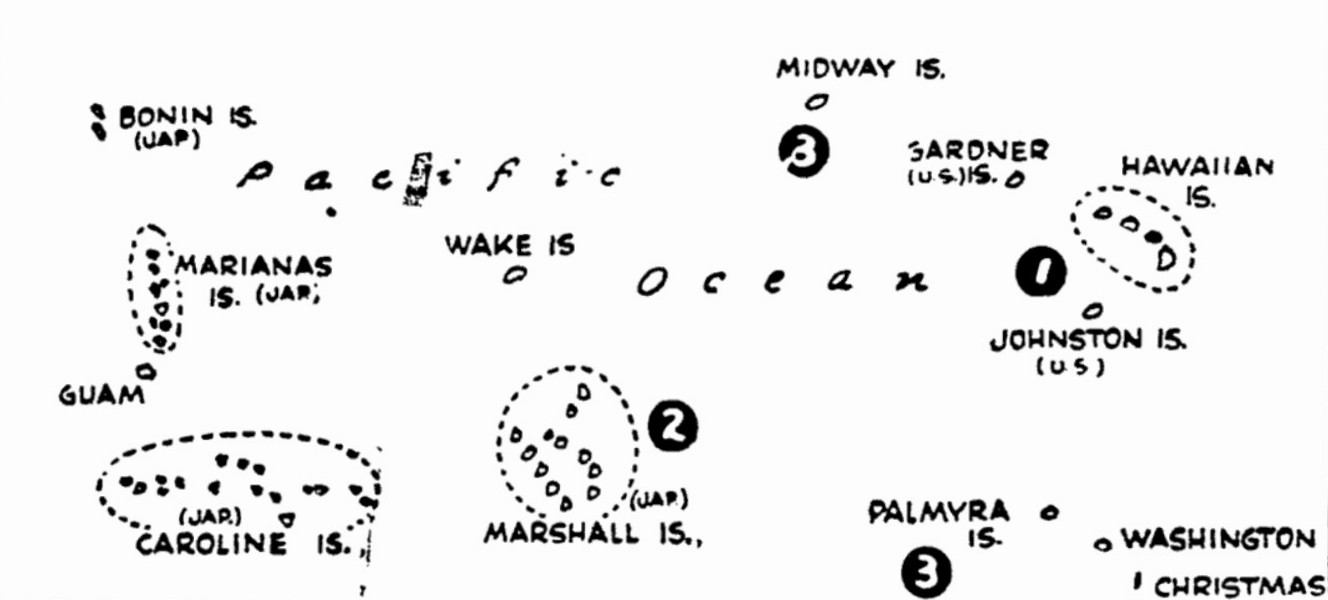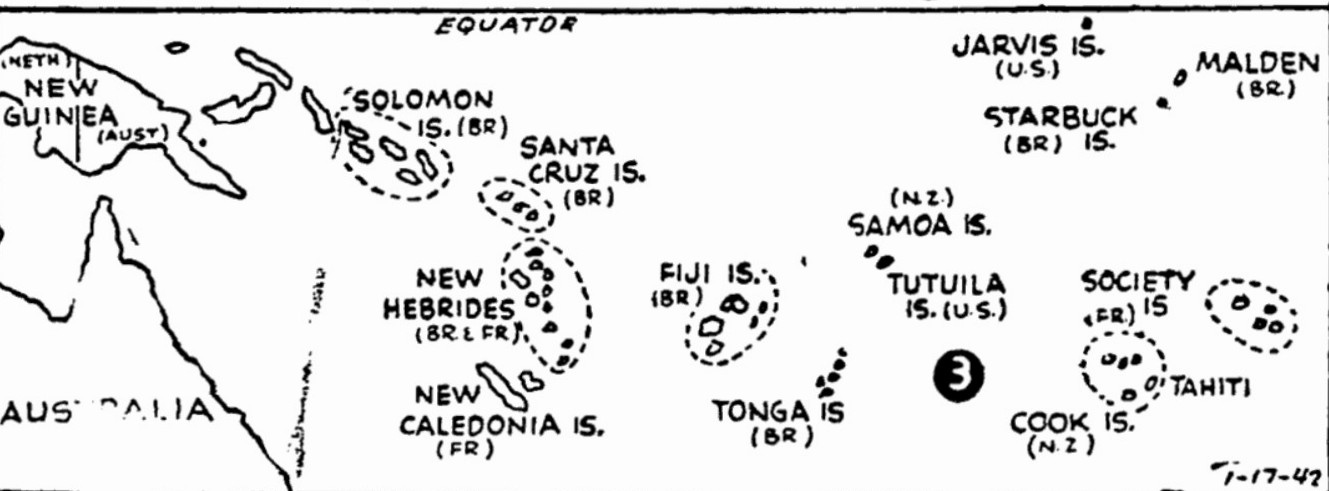Censorship code prevents news blackout despite curbs
Voluntary restrictions sought to forestall disclosures likely to aid enemy
Washington (UP) –
A code of wartime practices for newspapers, magazines, and other periodicals was announced today by the Office of Censorship.
Under the code, which was drafted by Director Byron Price and Assistant Director J. H. Sorrells after conferences with the industry, the government asks that certain classes of information which might be of aid to the enemy be withheld from publication except when officially given out.
Many of the practices proposed have already been put into effect by publications on a voluntary basis.
Statement issued
It was disclosed that Mr. Sorrells would be in direct charge of administration of the code, assisted by a small board of editors and an advisory council of the publishing industry, soon to be appointed.
The Office of Censorship issued the following statement:
This statement responds to the many inquiries received by the Office of Censorship, asking for an outline of newspaper and magazine practices which the government feels are desirable for the effective prosecution of the war.
It is essential that certain basic facts be understood.
Keep enemy uninformed
The first of these facts is that the outcome of the war is a matter of vital personal concern to the future of every American citizen. The second is that the security of our armed forces and even of our homes and our liberties will be weakened in greater or less degree by every disclosure of information which will help the enemy.
If every member of every news staff and contributing writer will keep these two facts constantly in mind, and then will follow the dictates of common sense, he will be able to answer for himself many of the questions which might otherwise trouble him. In other words, a maximum of accomplishment will be attained if editors will ask themselves with respect to any given detail, “Is this information I would like to have if I were the enemy?” and then act accordingly.
No journalistic blackout
The result of such a process will hardly represent “business as usual” on the news desks of the country. On the contrary, it will mean some sacrifice of the journalistic enterprise of ordinary times. But it will not mean a news or editorial blackout. It is the hope and expectation of the Office of Censorship that the columns of American publications will remain the freest in the world, and will tell the story of our national successes and shortcomings accurately and in much detail.
The highly gratifying response of the press so far proves that it understands the need for temporary sacrifice, and is prepared to make that sacrifice in the spirit of the President’s assurance that such curtailment as may be necessary will be administered:
…in harmony with the best interests of our free institutions.
Summary is listed
Below is a summary covering specific problems. This summary repeats, with some modifications, requests previously made by various agencies of the federal government, and it may be regarded as superseding and consolidating all of these requests.
Special attention is directed to the fact that all of the requests in the summary are modified by a proviso that the information listed may properly be published when authorized by appropriate authority. News on all of these subjects will become available from government sources; but in war, timeliness is an important factor, and the government unquestionably is in the best position to decide when disclosure is timely.
The specific information which newspapers, magazines, and all other media of publication are asked not to publish except when such information is made available officially by appropriate authority, falls into the following classes:
Troops
The general character and movements of United States Army, Navy, or Marine Corps units, within or without the continental limits of the United States – their location, identity, or exact composition, equipment, or strength; destination, routes, and schedules; assembly for embarkation, prospective embarkation, or actual embarkation. Any such information regarding the troops of friendly nations on American soil.
NOTE: The request as regards “location” and “general character” does not apply to troops in training camps in continental United States, nor to units assigned to domestic police duty.
Ships
The identity, location, and movements of United States naval or merchant vessels, of neutral vessels, or vessels of nations opposing the Axis powers in any waters, unless such information is made public outside continental United States; the port and time of arrival or prospective arrival of such vessels, or the port from which they leave; the nature of cargoes of such vessels; the identity or location of enemy naval or merchant vessels in any waters, unless such information is made public outside continental United States; the identity, assembly, or movements of transports or convoys; the existence of minefields or other harbor defenses; secret orders or other secret instructions regarding lights, buoys and other guides to navigators; the number, size, character, and location of ships in construction, or advance information as to the date of launchings or commissionings; the physical setup or technical details of shipyards.
Planes
The disposition, movements, missions, new characteristics, or strength of military air units of the United States or the United Nations unless such information is made public outside continental United States and its origin stated; scope and extent of military activities and missions of the Civil Air Patrol; movements of personnel, material, or other activities by commercial air lines for the military services, including changes of schedules occasioned thereby. Activities, operations and installations of the Air Forces Ferrying Command, the RAF Ferrying Command, or commercial companies operating services for or in cooperation with the Ferrying Command. Information concerning new military aircraft and related items of equipment or detailed information on performance, construction and armament of current military aircraft or related items now in service or commercial airline planes in international traffic.
Fortifications
The location of forts and other fortifications; the location of coast defense emplacements, antiaircraft guns, and other air defense installations; their nature and number; location of bomb shelters; location of camouflaged objects; information concerning installations by American military units outside the continental United States.
Production
Specifications which saboteurs could use to gain access to or damage war production plants. Exact estimates of the amount, schedules or delivery date of future production, or exact reports of current production. Exact amounts involved in new contracts for war production, and the specific nature or specifications of such production.
Nature of production should be generalized as follows: tanks, planes, plane parts, motorized vehicles, uniform equipment, ordnance, munitions, vessels. Generalize all types of camps to “camps” or “cantonments.” Any statistical information other than officially issued by a proper Government department which would disclose the amounts of strategic or critical materials produced, imported, or in reserve – such as tin, rubber, aluminum, uranium, zinc, chromium, manganese, tungsten, silk, platinum, cork, quinine, copper, optical glass, mercury, high octane gasoline. Any information indicating industrial sabotage. In reporting industrial accidents, no mention of sabotage should be made unless cleared with the appropriate military authority.
Any information about new or secret military designs, formulas, or experiments; secret manufacturing processes or secret factory designs, either for war production or capable of adaptation for war production. Nationwide or regional roundups of current war production or war contract procurement data; local roundups disclosing total numbers of war production plants and the nature of their production.
Weather
Weather forecasts, other than officially issued by the Weather Bureau; the routine forecasts printed by any single newspaper to cover only the State in which it is published and not more than four adjoining states, portions of which lie within a radius of 150 miles from the point of publication.
Consolidated temperature tables covering more than 20 stations in any one newspaper.
NOTE: Special forecasts issued by the Weather Bureau warning of unusual conditions, or special reports issued by the Weather Bureau concerning temperature tables, or news stories warning the public of dangerous roads or streets, within 150 miles of the point of publication, are all acceptable for publication.
Weather “roundup” stories covering actual conditions throughout more than one state, except when given out by the Weather Bureau.
Photographs and maps
Photographs conveying the information specified in this summary, unless officially approved for publication.
Detailed maps or photographs disclosing location of munition dumps, or other restricted Army or naval areas.
NOTE: This has no reference to maps showing the general theater of war or large-scale zones of action, movements of contending forces on a large scale, or maps showing the general ebb and flow of battle lines; or maps showing the general ebb and flow of battle lines.
NOTE: Special care should be exercised in the publication of aerial photos presumably of non-military significance, which might reveal military or other information helpful to the enemy; also care should be exercised in publishing casualty photos so as not to reveal unit identifications through collar ornaments, etc. Special attention is directed to the section of this summary covering information about damage to military objectives.
General
Casualty lists
NOTE: There is no objection to publication of information about casualties from a newspaper’s local field, obtained from nearest of kin, but it is requested that in such cases, specific military units and exact locations be not mentioned.
Information disclosing the new location of national archives, or of public or private art treasures, and so one, which have been moved for safekeeping.
Information about damage to military and naval objectives, including docks, railroads, or commercial airports, resulting from enemy action.
NOTE: The spread of rumors in such a way that they will be accepted as facts will render aid and comfort to the enemy. It is suggested that enemy claims of ship sinkings, or of other damage to our forces should be weighed carefully and the sources clearly identified, if published.
Information about the transportation of munitions or other war materials, including oil tank cars and trains.
President covered
Information about the movements of the President of the United States or of official military or diplomatic missions of the United States or of any other nation opposing the Axis powers – routes, schedules, destination, within or without continental United States: movements of ranking Army or naval officers and staffs on official missions; movements of other individuals or units under special orders of the Army, Navy or State Department.
NOTE: Advertising matter, letters to the editor, interviews with men on leave, columns, and so on, are included in the above requests, both as to text and illustration.
Inquiries welcomed
If information concerning any phase of the war effort should be made available anywhere which seems to come from doubtful authority, or to be in conflict with the general aims of these requests; or if special restrictions requested locally or otherwise by various authorities seem unreasonable or out of harmony with this summary, it is recommended that the question be submitted at once to the Office of Censorship.
In addition, if any newspaper, magazine, or other agency or individual handling news or special articles desires clarification or advice as to what disclosures might or might not aid the enemy, the Office of Censorship will cooperate gladly. Such inquiries should be addressed to the Office of Censorship, Washington. Telephone Executive 3800.
Should further additions or modifications of this summary seem feasible and desirable from time to time, the industry will be advised.
BYRON PRICE
Director, the Office of Censorship
January 15, 1942



